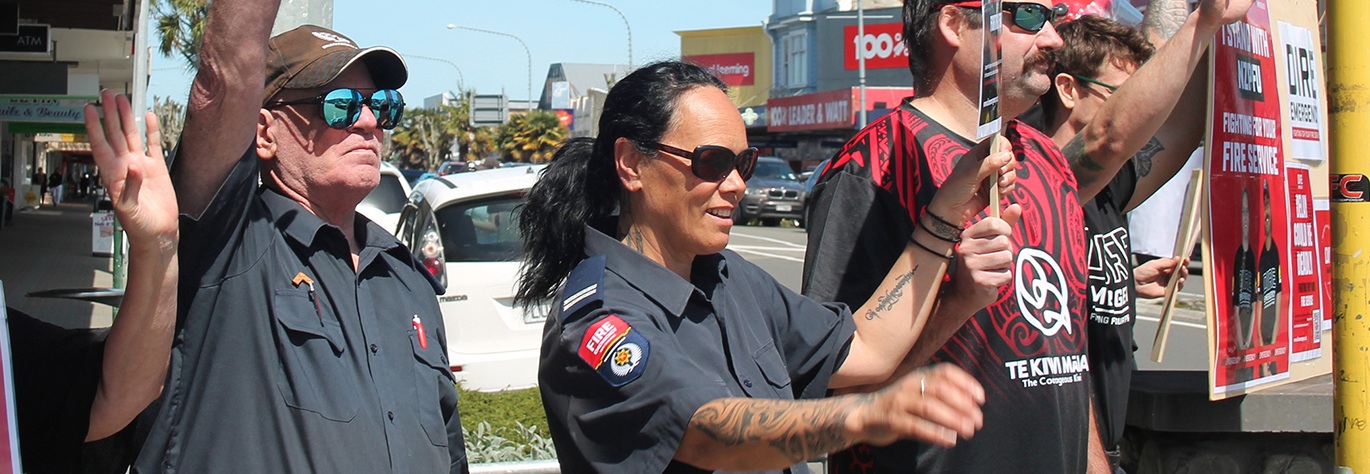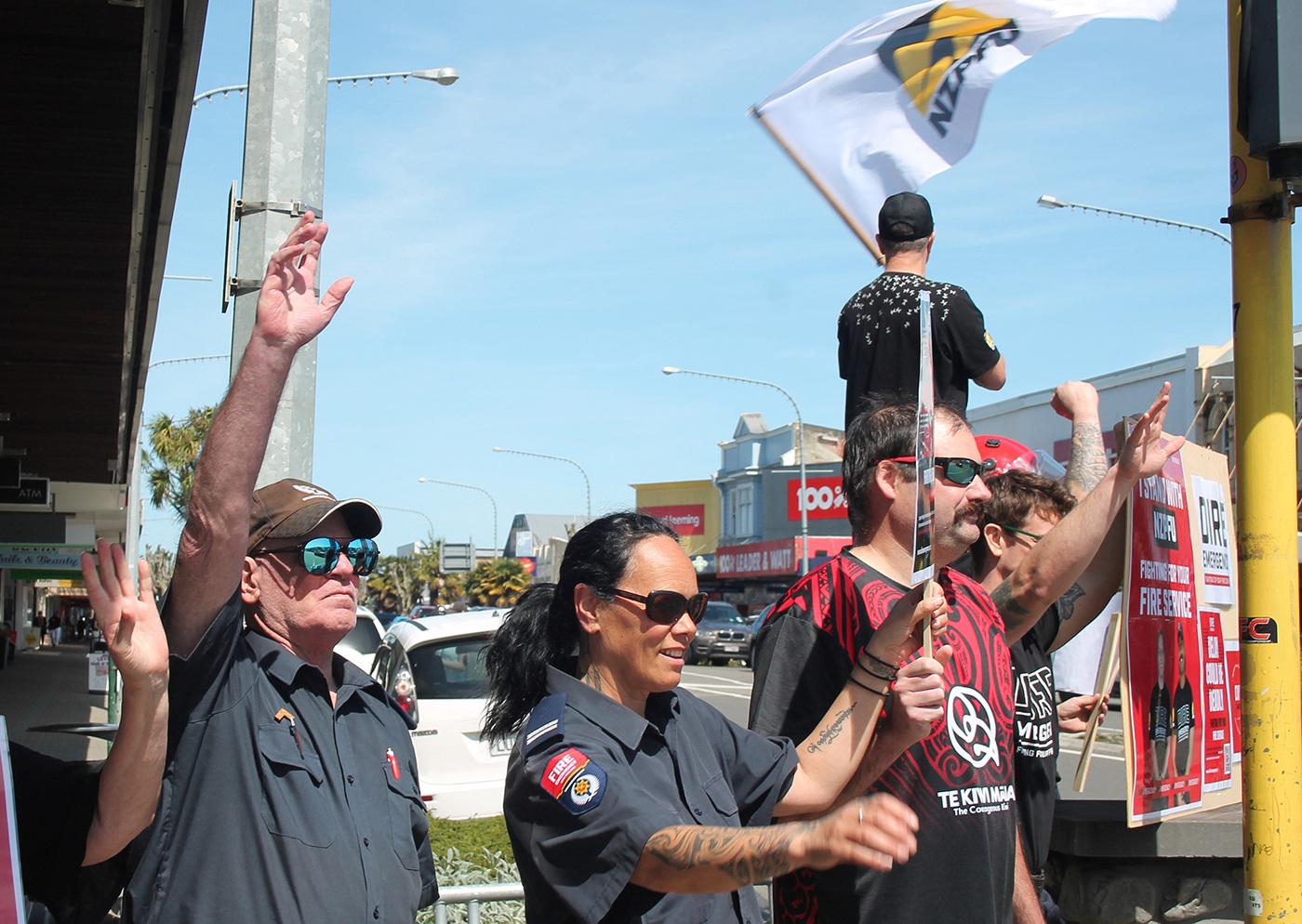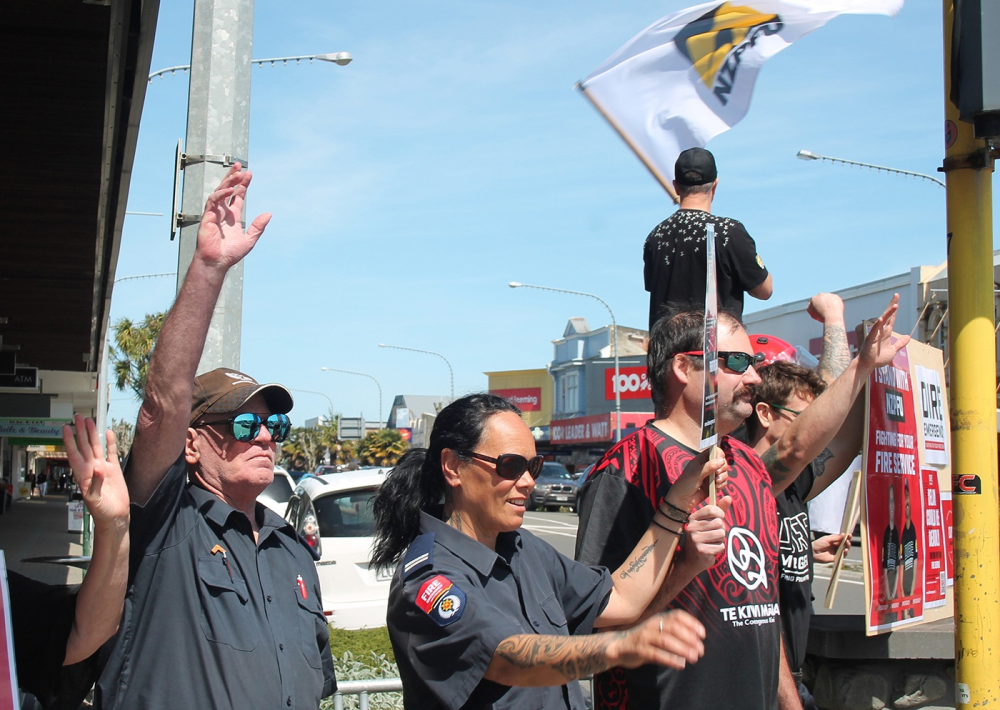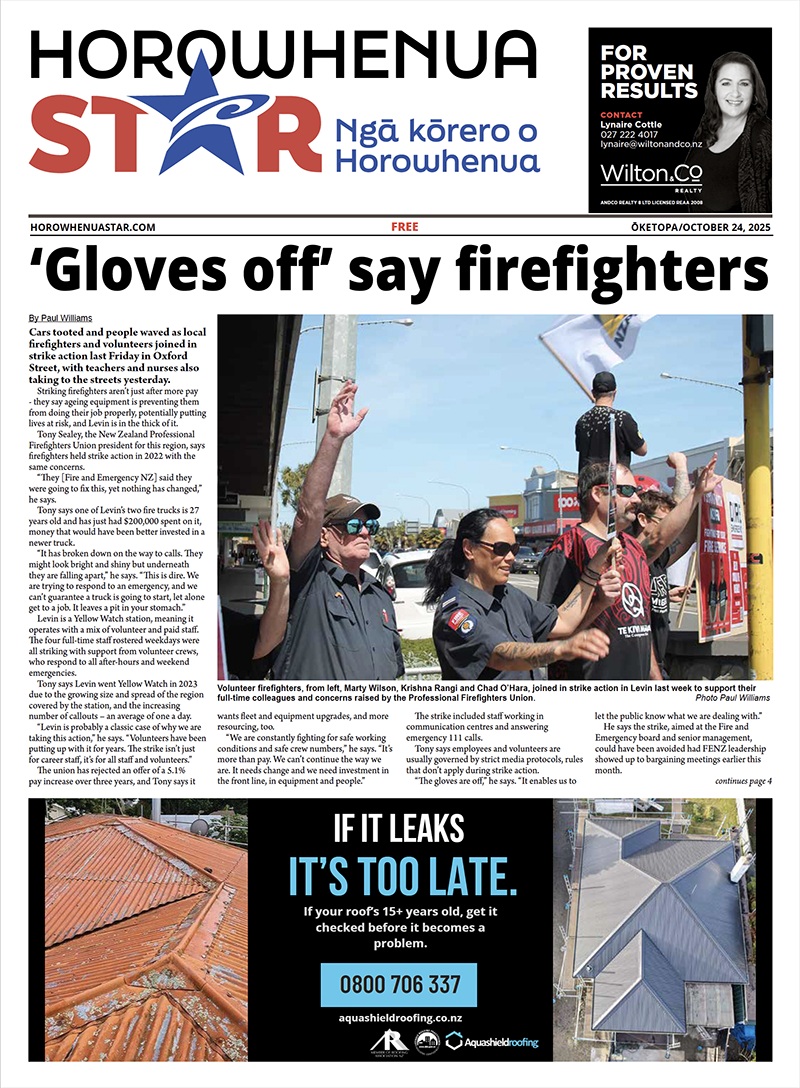
Cars tooted and people waved as local firefighters and volunteers joined in strike action last Friday in Oxford Street, with another strike planned next Friday.
They’re not just after more pay – striking fire-fighters say ageing equipment is preventing them from doing their job properly, potentially putting lives at risk, and Levin is in the thick of it.

Volunteer firefighters, from left, Marty Wilson, Krishna Rangi and Chad O’Hara, joined in strike action in Levin last week to support their full-time colleagues and concerns raised by the Professional Firefighters Union. Photo Paul Williams
Tony Sealey, the New Zealand Professional Firefighters Union president for this region, says firefighters held strike action in 2022 with the same concerns.
“They [Fire and Emergency NZ] said they were going to fix this, yet nothing has changed,” he says.
Tony says one of Levin’s two fire trucks is 27 years old and has just had $200,000 spent on it, money that would have been better invested in a newer truck.
“It has broken down on the way to calls. They might look bright and shiny but underneath they are falling apart,” he says. “This is dire. We are trying to respond to an emergency, and we can’t guarantee a truck is going to start, let alone get to a job. It leaves a pit in your stomach.”
Levin is a Yellow Watch station, meaning it operates with a mix of volunteer and paid staff. The four full-time staff rostered weekdays were all striking with support from volunteer crews, who respond to all after-hours and weekend emergencies.
Tony says Levin went Yellow Watch in 2023 due to the growing size and spread of the region covered by the station, and the increasing number of callouts – an average of one a day.
“Levin is probably a classic case of why we are taking this action,” he says. “Volunteers have been putting up with it for years. The strike isn’t just for career staff, it’s for all staff and volunteers.”
The union has rejected an offer of a 5.1% pay increase over three years, and Tony says it wants fleet and equipment upgrades, and more resourcing, too.
“We are constantly fighting for safe working conditions and safe crew numbers,” he says. “It’s more than pay. We can’t continue the way we are. It needs change and we need investment in the front line, in equipment and people,” he says.
The strike included staff working in communication centres and answering emergency 111 calls.
Tony says employees and volunteers are usually governed by strict media protocols, rules that don’t apply during strike action.
“The gloves are off,” he says. “It enables us to let the public know what we are dealing with.”
He says the strike, aimed at the Fire and Emergency board and senior management, could have been avoided had FENZ leadership
showed up to bargaining meetings earlier this month.
“They chose not to show,” he says.
He says a budget of $860 million isn’t being spent in the areas that need it.
Fire and Emergency NZ (FENZ) had 18 calls during the one-hour strike, most of which were vehicle crashes.
Deputy national commander Megan Stiffler says FENZ is disappointed the union had issued a further strike notice for another one-hour strike at midday on October 31.
“I urge the NZPFU to withdraw this latest strike notice and not issue any more, so we can get back around the bargaining table while we wait for our application for facilitation to be considered,” she says. “This is in the best interests of our people, and New Zealand’s communities.
“Fire and Emergency’s goal is, and has always been, to reach a fair, sustainable, and reasonable settlement with the NZPFU. We are bargaining in good faith and doing everything we can to achieve an agreement without disrupting the services communities rely on.”
Meanwhile, it’s been a hectic week across the country for FENZ staff dealing with big fires in Christchurch, Kaikoura and Hawke’s Bay.
As a result of strong wind forecasts, Wellington and Hawke’s Bay districts have enforced a total ban on outdoor fires and fireworks until 8am on Monday. Winds are forecast to exceed 100km/h in many places, with high temperatures and low humidity creating very high fire risk conditions.
Hawke’s Bay has already had significant fires with the windy conditions on Tuesday, while firefighters were stretched across the Wellington region, including the Wairarapa and Kāpiti Coast, responding to weather-related callouts.
The prohibition means no new outdoor fires can be lit. People must also check their previous burns for signs of reignition.
OTHER STORIES















